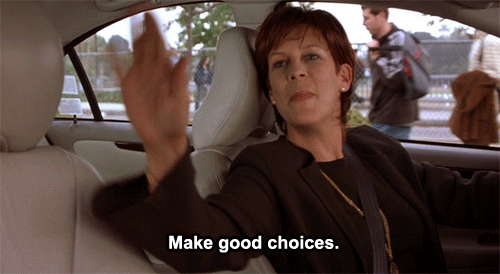Open. That was the word I chose on January 1st — the word that would define my intention for the year. At the time, I was laser focused on opening a brick and mortar location for the Happy Hour. It’s now February 13th, and boy oh boy, that word has taken on a whole new meaning to me.
Flashback to the first week in January. I had just begun training to become a Certified Holistic Life Coach. I’d been doing online classes for a while, but couldn’t get my act together to actually finish the requirements, so I decided to commit to the in-person training and just get it done. Being both a new business owner and a parent of two kids under three years old, productivity and efficiency were always at the forefront of my mind.
Ever since I did a 180 from my corporate job and started my health journey, I have considered myself a pretty intense person when it comes to anything self-care, mental health, and self-awareness related. I do the work; I regularly see a therapist, practice yoga, and read all the inspiring Instagram posts. I try all the new wellness stuff out there – and preach about it! I turned my life’s work into creating a company that promotes the kind of self-care and community that normalizes mental wellness, in the hopes of making the world a happier place. I think of myself as a happy person, because I am! But, I recently came face to face with issues that have been lurking beneath the surface, and holding me back in so many areas of my life. I’ve spent a lot of time uncovering and working through them over the years, but it wasn’t until Day 3 of Life Coach training that I had finally said “uncle,” and surrendered to my truth. We spent hours each day of training getting coached in a group and doing a lot of deep introspection. The idea being, that you can’t be an effective life coach if you aren’t aware of what’s going on inside of you… you can’t give what you don’t have.
Well, Day 3 is the day that something inside of me snapped. I can’t tell you what the final trigger was, but it doesn’t matter. All that matters is that it happened. My typically buttoned-up, polished, MBA-trained self, broke down and confessed to the group that I was sick of it. I was sick of always being buttoned up. I was sick of being polished. I was sick of feeling closed off. I was sick of the pressure I put on myself to be perfect. SICK.OF.IT. The trainer took a breath, and masterfully responded with a quote that author Elizabeth Gilbert tweeted several years back:
I’ve never seen any life transformation that didn’t begin with the person in question finally getting tired of their own bullshit.
Wow. I just got called out. And she hit the nail on the head. I promptly opened my journal to a fresh page, and titled it: “My Bullshit To Get Over ” and wrote a bulleted list of what I consider to be, well, my own bullshit. I noticed that there was a clear theme on my list – fear. Fear was driving so many of my decisions, and how I showed up in everyday life. What am I so afraid of? Why have I been letting fear take the wheel for so long? In that moment, I became determined to address this bullshit list head-on.
Breakthrough number two came on Day 4 of training, when the same trainer posed the question, “What spiritual rituals do you practice every day?” Cue the bead of sweat down my forehead. This question both sent me into a tailspin, and subsequently changed my life. As we went around the circle, it seemed that everyone had a number of beautifully articulated spiritual rituals that they practiced on a daily basis. As my peers spoke about these rituals, the peace and elation that accompanied their words were palpable. It was clear to see that they were vibrating on some other level that I didn’t know about. A club of which I wasn’t a part because I, on the other hand, didn’t even know what spiritual practice was. To be honest, I didn’t really know what the word ‘spiritual’ meant. Does this mean how pious you are? How often you pray to your higher power? How frequently you meditate? I believe in God, I pray as often as I think about it, I go to church sometimes… Where does that put me on this spiritual scale? To put it lightly, I was confused.
To answer her question, all I could muster up was, “ummmm, pass?”. The confusion and panic in my face became apparent to the group, so we took a step back to talk about the definition of spirituality. There is no one-size-fits all definition here, but the one that stuck to me was the one that defined spirituality as “anything that brings you closer to gratitude.” All of a sudden it didn’t feel like such a daunting task. Maybe I could do this after all.
You’d think that after years of trying any sort of self-development work I could get my hands on that I would’ve figured out a spiritual routine that brought me to my higher self, if you will. But I didn’t. That always bothered me, but I couldn’t figure out why. I put in the work, why am I not feeling the peace and spiritual connection I’m looking for?
What I’ve come to realize is that on the other side of this desire to become the best and happiest version of myself has been sitting a tremendous amount of fear, and when you let fear act as the guiding force in your decisions and actions, you are never going to be present enough to find that higher self that radiates positive energy (which is how I envision spirituality). Feeling simply content and confident that you are doing exactly what you are supposed to be doing. In my endeavor to become the best leader I could be, to become the most successful business person I could be, and the best parent I could be, I lost two things: my sense of self and my creativity. My spirituality, this ‘higher self,’ would never appear without those things. That’s not good enough for me anymore. Maybe what I find will look different than what I’ve envisioned, but I’m sure as hell not going to stand in the way of realizing my own spirituality, whatever that may look like, anymore.
What’s this about creativity though? Somewhere along the way in the past decade, after writing hundreds of pages of business case studies, memos, pitches, and the like, I lost my creativity. Or maybe just buried it deep beneath piles of excel spreadsheets and business lingo. I was so focused on producing and hitting deadlines that I didn’t allow time for anything creative. Sadly, I came to believe that I wasn’t creative, and told people all the time, “I’m just not a creative person.”
That’s where this blog comes into play. I’m combining the two things that have felt like a hole in my recent life: spirituality and creativity. This blog is an attempt to uncover the creativity that I buried a while back, while also saying goodbye to fear. I’m jumping all in to new ways to heal what needs to be healed, and digging deeper into myself to reach that higher vibration I talked about.
Over the next few weeks I’ll bring you along with me as I try new things in hopes to shed some light on something you may have been curious about, but haven’t yet pushed ‘go’ on. I will be your guinea pig, so to speak.
As I’ve become more present through this spiritual journey, I’ve noticed how much my daughter reminds me of myself as a kid, spending hours reading books, getting so much joy from it, and using her imagination to make up fun stories. It pained me to ask myself why I ever stopped doing that. Why did I lose that child-like excitement about creativity? Reading and writing brought me so much joy. I’m giving it a whirl again, and my writing muscle is a good bit weaker than it once was, but I’m having a lot of fun giving it some attention.
I’m a month into this journey, and I feel like I don’t know who I am anymore, but also like I’m my true self for the first time in my life. I am beginning to remove those blocks. And the payoff has been incredible. By the way, that “List of My Own Bullshit” I mentioned earlier has kicked off my daily journaling practice as each day I write about how I’m going to get over my own BS that day, along with any other feelings that come up. And just like that, I’ve got my first daily spiritual ritual.


